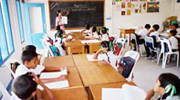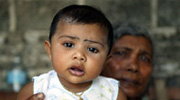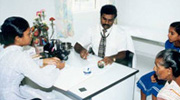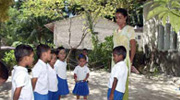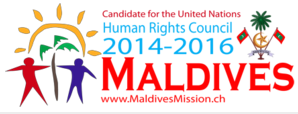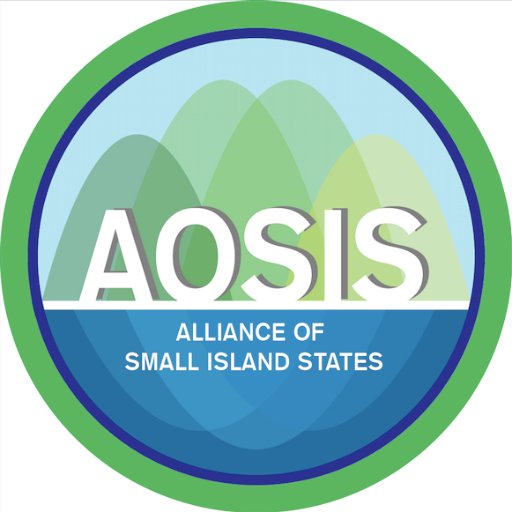Economic growth in the Maldives has been accompanied by impressive progress in the social field – most notably in the areas of health and education – resulting in improvements in the living standards and quality of life of all Maldivians.
In the health field, infant mortality has been reduced from 120 per thousand live births in 1978 to just 12 in 2005, while maternal mortality has been reduced from around 500 per hundred thousand live births in 1990 to just 78 in 2003.
On both counts the Maldives is well on course to meet the Millennium Development Goals of “reducing by two-thirds, between 1990 and 2015, the under-five mortality rate” and “reducing by three quarters, between 1990 and 2015, the maternal mortality rate”. Regarding infant mortality, the UN noted in its MDG Country Report for the Maldives in 2005 that “during the last 10 years the Maldives has achieved commendable progress in reducing child mortality relative to other least developed countries. It is highly likely that the Maldives will achieve the MDG target”. Regarding maternal mortality, the MDG report stated that “the Maldives appears to have already achieved the MDG target 6 to reduce maternal mortality. The policies which contributed to this achievement include: providing easy access to services for all groups of people; focusing on awareness creation on high-risk pregnancies; antenatal and postnatal care; all pregnant women to receive minimum of three antenatal check-ups; and all deliveries to be conducted by trained personnel”.
The health status of the Maldivian people with regard to communicable diseases has also improved markedly. The Maldives’ emphasis on preventative health – particularly immunisation – has resulted in the near elimination of polio and tetanus. Moreover, no cases of diphtheria and whooping cough have been identified within the last decade. Among other communicable diseases, malaria has been eliminated and diarrhoeal diseases brought under control. Leprosy and filaria are also shortly expected to achieve zero transmission. As a consequence of these achievements, the Maldives is well on course to meet the Millennium Development Goals on disease control, with the UN’s MDG 2005 report concluding that “notable achievements have been made in the control of communicable diseases in the Maldives”.
As a consequence of these achievements, life expectancy in the Maldives has seen massive improvements over recent decades, increasing from 48 years in 1978 to 72 years in 2005.
Despite these successes, the Maldives continues to push for even higher standards. The Government of Maldives considers that the enjoyment of the highest attainable level of health is a basic right of every citizen. Therefore, in order to further improve health in the Maldives the Government has, in consultation with all partners in health development, identified priority areas for further attention. These areas are tuberculosis, AIDS, reproductive health, heart disease, respiratory diseases, thalassaemia, hypertension, drug abuse, cerebro-vascular disease, kidney disease and cancer. In addition, the promotion of healthy lifestyles has become a priority – with the aim of reducing the burden of diseases in the community, and enabling early detection of preventable diseases, health problems and their complications. The initiatives that have been undertaken to discourage smoking are a good example.
In order to achieve these results, the Government continues to invest heavily in health care provision. For example, over recent years, the physical health infrastructure has expanded considerably. The 200-bed Indira Gandhi Memorial Hospital (IGMH) has been built, a 50-bed private hospital opened, regional hospitals have been modernised, and a number of atoll health centres up-graded. Two more regional hospitals, a public health laboratory, a rehabilitation centre and more atoll health centres will be constructed shortly.
Similarly impressive progress has been achieved in the field of education.
The Maldives is well on track to achieve the Millennium Development Goal of universal primary education by the year 2015. The UN states that “all indicators for this goal are well on track. Over the last 15 years public expenditure has been targeted to expanding primary education and by 2004 primary education was available on all 199 inhabited islands with a net enrolment ratio of 100% for both boys and girls”.
Student enrolment in the Maldives has increased from 73,642 in 1992 to 104,214 in 2004, with a broadly equal split between males and females (51,309 female pupils and 52,905 male). Moreover, the distribution of school places also shows a good geographical balance between the capital, Male (29,307 pupils) and the various atolls (74,907 pupils) - demonstrating that education is available to all children in the Maldives, no matter where they live.
In terms of the number of schools and teachers, the Maldives also scores well. In 2004, across the 20 atolls plus the capital Male, there were 57 schools of more than 500 pupils and 261 schools of less than 500 pupils. Serving these schools were 5,239 teachers (3,248 trained; 1,991 untrained – these figures do not include head teachers, deputy head teachers or administrative staff), giving a student-teacher ratio (for trained teachers only) of 32.09.
The result of this investment in education is that the literacy rate in the Maldives now stands at 98%. Both the literacy rate and the school enrolment rate of the Maldives are comfortably the highest in the South Asia region.
